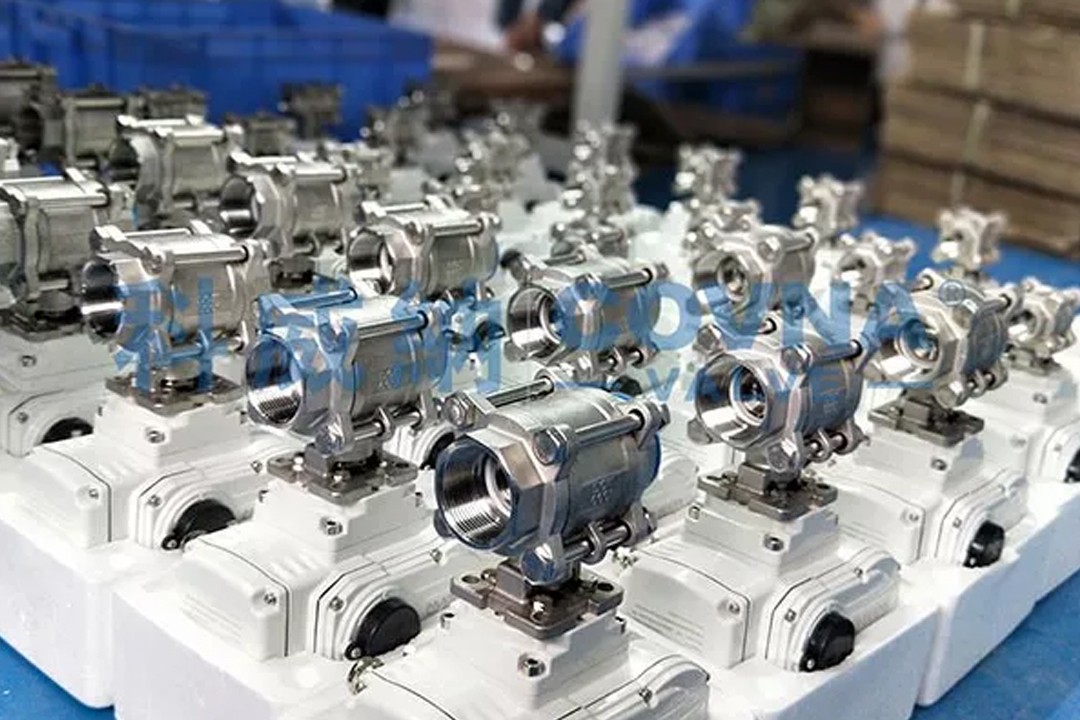Valves are used to control the flow of air, water, steam, various corrosive media, oil, liquid metals, and radioactive substances. They perform functions such as shut-off, regulation, diversion, backflow prevention, pressure stabilization, flow distribution, or pressure relief.
The overall demand for valves is on the rise, driven mainly by the energy needs of developing countries. Currently, the most in-demand valve types include ball valves, globe valves, safety valves, gate valves, butterfly valves, control valves, and check valves.
So, which industries have the highest demand for valves? Let's explore:

1. Petroleum Industry
① Refining Equipment: Refining equipment primarily uses pipeline valves, mainly gate valves, globe valves, check valves, safety valves, ball valves, butterfly valves, and steam traps. Among them, gate valves account for about 80% of the total valve usage (valves make up 3-5% of total equipment investment).
② Chemical Fiber Equipment: Used in polyester and vinylon production, requiring ball valves and jacketed valves (jacketed ball valves, jacketed gate valves, jacketed globe valves).
③ Acrylonitrile Equipment: Requires gate valves, globe valves, check valves, ball valves, steam traps, needle globe valves, and plug valves, with gate valves making up approximately 75% of total demand.
④ Ammonia Synthesis Equipment: The required valve specifications vary based on different ammonia synthesis processes. In China, the primary valve types include gate valves, globe valves, check valves, steam traps, butterfly valves, ball valves, diaphragm valves, control valves, needle valves, safety valves, and high/low-temperature valves.
2. Environmental Protection Industry
Water supply systems in environmental protection equipment mainly require centerline butterfly valves, soft-seal gate valves, ball valves, and air release valves (for removing air from pipelines). Wastewater treatment equipment primarily requires soft-seal gate valves and butterfly valves.

3. Metallurgical Industry
① Alumina Smelting: Requires wear-resistant slurry valves and regulating steam traps.
② Steelmaking: Requires metal-sealed ball valves, butterfly valves, oxide ball valves, globe valves, and four-way directional valves.
4. Offshore Energy Exploration
With the growing offshore oilfield development, the demand for marine exploration valves is steadily increasing. The required valves include ball valves, check valves, and multi-way valves.
5. Food & Pharmaceutical Industry
This industry mainly uses stainless steel ball valves, sanitary-grade ball valves, and butterfly valves. Additionally, instrumentation valves, needle valves, needle globe valves, gate valves, globe valves, check valves, ball valves, and butterfly valves are also in high demand.

6. Rural & Urban Construction
• Low-pressure valves are widely used in urban construction and are shifting towards eco-friendly and energy-saving options.
• Rubber-lined valves, balancing valves, centerline butterfly valves, and metal-sealed butterfly valves are gradually replacing low-pressure iron gate valves.
• Common urban construction valves include balancing valves, soft-seal gate valves, and butterfly valves.
7. Rural & Urban Heating Systems
• District heating systems require large quantities of metal-sealed butterfly valves, horizontal balancing valves, and buried ball valves.
• These valves help solve hydraulic imbalance issues in pipeline networks, ensuring energy efficiency and balanced heat distribution.

8. Hydropower Plants
With China's power station construction shifting towards large-scale projects, the demand for large-diameter and high-pressure valves is increasing. Key valve types include:
✔ Safety valves
✔ Pressure-reducing valves
✔ Globe valves
✔ Gate valves
✔ Butterfly valves
✔ Emergency shut-off valves
✔ Flow control valves
✔ Spherical-sealed instrument globe valves
According to China's "15th Five-Year Plan", power plants in Inner Mongolia and Guizhou can still construct 200,000 kW+ units, while other provinces are limited to 300,000 kW+ units.
9. Natural Gas Valves
• Urban gas distribution accounts for 32% of the total natural gas market, with high valve demand.
• Common valves include ball valves, plug valves, pressure-reducing valves, and safety valves.
10. Pipeline Transportation
• Fluids transported via pipelines mainly include crude oil, refined oil, and natural gas.
• High-demand valve types include forged steel three-piece full-bore ball valves, sulfur-resistant slab gate valves, safety valves, and check valves.
That's all for today's Valve Knowledge Classroom!
Want to learn more? Follow us for more updates!











